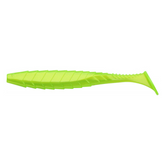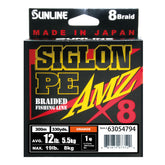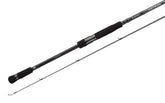Pike Fishing in Spring
Pike fishing in spring is an exciting and challenging activity that attracts anglers from all over the world. As the winter ice melts and the weather warms up, Pike become more active and hungry, making spring one of the best times of the year to catch these fierce freshwater predators. In this article, we will explore the techniques, locations, gear, tips, and challenges associated with Pike fishing in spring.
Best Techniques for Catching Pike in Spring
Pike are known for their aggressive feeding behavior in spring, making them more likely to strike at bait or lures. Here are some effective techniques for catching Pike in spring:
Casting and retrieving: Cast your bait or lure near weed beds, submerged structures, or drop-offs, and retrieve it with erratic movements to mimic wounded prey. Pike are attracted to fast-moving targets and may strike aggressively.We reccomend Strike Pro Pig Shad.
Jerkbait fishing: Jerkbait lures imitate injured fish and can trigger Pike to strike. Use short, sharp jerks to create a realistic swimming action and pause in between to tempt Pike into biting.
Live bait fishing: Use live bait such as minnows, shiners, or suckers suspended under a bobber or on a slip rig. Place the bait near cover or in areas where Pike are likely to be hiding, and be patient.
Dead bait fishing: Use dead bait fish like smelt, herring, or cisco on a quick strike rig or a tip-up. Place the bait close to the bottom or suspend it at different depths to entice Pike.
Fly fishing: Use large streamers, poppers, or topwater flies to entice Pike to strike. Cast your fly near weeds, rocks, or other cover, and strip it in with aggressive movements to trigger a response.
Ideal Locations for Pike Fishing in Spring
Pike are known to inhabit a variety of freshwater habitats, and their preferred locations may vary depending on the time of year and water conditions. In spring, Pike can be found in the following ideal locations:
Weed beds: Pike are notorious for hiding in weed beds, especially in shallow areas where the water is warmer. Look for submerged weed beds near the shore or in deeper water, and cast your bait or lure near the edges or pockets.
Submerged structures: Pike often seek cover in submerged structures such as fallen trees, rocks, or underwater vegetation. These structures provide hiding spots for prey and offer Pike an ambush opportunity. Cast your bait or lure near these structures and retrieve it with erratic movements.
Drop-offs: Pike are known to patrol the edges of drop-offs, where shallow water meets deeper water. Look for drop-offs near points, islands, or underwater structures, and cast your bait or lure along the edges or at different depths to entice Pike.
Inlets and outlets: Pike are attracted to the warmer water and food-rich areas near inlets and outlets of rivers, streams, or lakes. Cast your bait or lure near these areas, and retrieve it with varying speeds and depths to target active Pike.
Currents: Pike are known to congregate in areas with moderate currents, as it brings food and oxygen to them. Look for areas with moderate currents, such as river mouths, channels, or narrows, and cast your bait or lure strategically to take advantage of the Pike's feeding behavior.
Recommended Gear for Pike Fishing in Spring
Having the right gear is crucial for successful Pike fishing in spring. Here are some recommendations for gear that you should consider:
Rod and reel: Use a medium to heavy-duty spinning or baitcasting rod and reel combo with a strong and durable line, preferably a braided line, as it offers better sensitivity and strength to handle the aggressive strikes of Pike.
Lures and baits: Carry a variety of lures and baits to experiment with different presentations and mimic the Pike's prey. Some recommended lures for Pike fishing in spring include jerkbaits, spinnerbaits, swimbaits, and topwater lures. Live baits such as minnows, shiners, or suckers are also effective.
Leaders: Use a steel or fluorocarbon leader to prevent Pike from biting through the line and escaping. Opt for a leader with a minimum of 30-pound test strength to handle the sharp teeth of Pike.
Hooks: Choose strong and sharp hooks, preferably with a barb, to increase the chances of hooking Pike successfully. Treble hooks are commonly used with lures, while circle or J-hooks are recommended for live or dead bait fishing.
Landing net: A sturdy landing net with a large hoop and a long handle is essential for safely landing large Pike. Avoid using a gaff, as it can harm the fish and is not recommended for catch-and-release practices.
Polarized sunglasses: Polarized sunglasses help you see through the glare on the water surface, allowing you to spot Pike, submerged structures, or weed beds more easily.
Safety gear: Always wear a properly fitting personal flotation device (PFD) or life jacket when fishing from a boat or in wading situations. Carry a first aid kit, a whistle or horn, and other necessary safety equipment in case of emergencies.
Tips for Successful Pike Fishing in Spring
Be patient: Pike can be elusive and may require patience to locate and entice. Be prepared to spend some time in different locations and experiment with different techniques until you find what works.
Vary your retrieves: Pike can be moody and may prefer different presentations on different days. Vary your retrieves, speeds, and depths to trigger the Pike's curiosity and entice them to bite.
Use the right size bait: Choose bait or lures that match the size of the Pike's natural prey. In spring, Pike may feed on smaller fish, so opt for smaller bait or lures that mimic their prey.
Pay attention to water temperature: Pike are cold-blooded creatures and are affected by water temperature. As spring progresses, the water temperature rises, and Pike become more active. Monitor the water temperature and adjust your techniques accordingly.
Explore different depths: Pike may be found at different depths in spring, depending on the water temperature and conditions. Experiment with different depths, from shallow to deep, to locate the active Pike.
Handle Pike with care: Pike have sharp teeth and can be aggressive when caught. Handle them with care, use a landing net to avoid injury to both you and the fish, and practice catch-and-release to conserve the Pike population.
Follow fishing regulations: Always follow local fishing regulations, such as size limits, catch limits, and fishing seasons, to ensure sustainability and conservation of the Pike population.
Common Mistakes to Avoid While Pike
Using the wrong gear: Using light or inadequate gear can result in losing a big Pike or breaking your line. Make sure to use medium to heavy-duty gear, including a strong line, leader, and appropriate hooks, to handle the aggressive nature of Pike.
Ignoring weather and water conditions: Pike behavior is influenced by weather and water conditions. Ignoring these factors can result in poor fishing success. Pay attention to water temperature, wind direction, cloud cover, and other weather-related factors to adjust your fishing techniques accordingly.
Not varying your presentations: Pike can be picky and may not respond to the same presentation consistently. Not varying your retrieves, speeds, or depths can decrease your chances of success. Experiment with different presentations to trigger the Pike's curiosity and entice them to strike.
Fishing at the wrong depths: Pike can be found at different depths in spring, depending on the water temperature and conditions. Fishing at the wrong depths can result in missed opportunities. Experiment with different depths, from shallow to deep, to locate the active Pike.
Poor bait selection: Using the wrong size or type of bait can result in less success. Pike may prefer different prey in different seasons, so choose bait or lures that mimic the size and type of their natural prey in spring.
Mishandling Pike: Pike have sharp teeth and can be aggressive when caught. Mishandling them can result in injuries to both you and the fish. Use a landing net and handle Pike with care, avoiding harm to the fish and practicing catch-and-release to conserve the Pike population.
Not following fishing regulations: Fishing regulations are in place to ensure sustainability and conservation of fish populations. Not following local fishing regulations, such as size limits, catch limits, and fishing seasons, can result in legal consequences and harm to the fish population.
Conclusion
Spring is an exciting time for Pike fishing, as the fish become more active after the winter months. By understanding the behavior and habitat of Pike in spring, using the right gear and techniques, and following fishing regulations, you can increase your chances of success on the water. Remember to handle Pike with care, practice catch-and-release, and always respect the environment and local fishing regulations. Happy fishing!
FAQs (Frequently Asked Questions)
What is the best time to go Pike fishing in spring?The best time to go Pike fishing in spring is when the water temperature starts to rise, usually after the ice melts and the fish become more active. This can vary depending on the location and weather conditions.
What are some recommended lures for Pike fishing in spring?
Some recommended lures for Pike fishing in spring include jerkbaits, spinnerbaits, swimbaits, and topwater lures. Experiment with different presentations to entice the Pike to bite.
What size bait should I use for Pike fishing in spring?
In spring, Pike may feed on smaller fish, so using smaller bait or lures that mimic their prey can be effective. Choose bait or lures that match the size and type of Pike's natural prey in the area.
Can I keep the Pike that I catch in spring?
It is important to check local fishing regulations regarding catch limits and size limits for Pike. In some areas, catch-and-release practices may be encouraged to conserve the Pike population.
What should I do if I catch a big Pike in spring?
If you catch a big Pike in spring, handle it with care using a landing net and avoid harming the fish. Practice catch-and-release to allow the fish to spawn and contribute to the Pike population's sustainability.



















